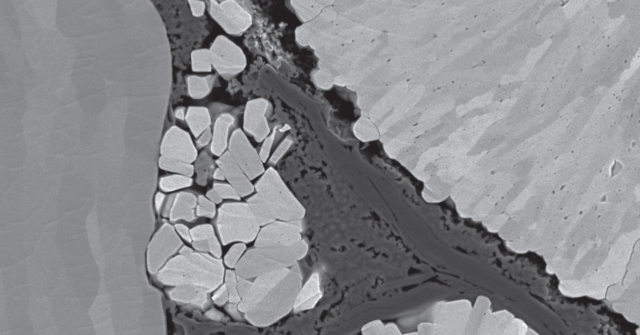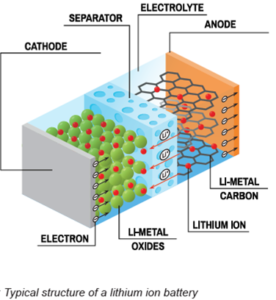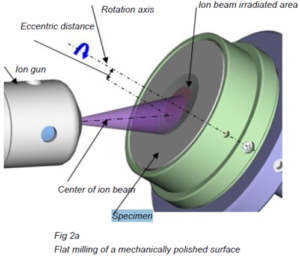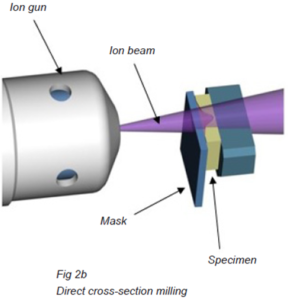
Introduction
The growing urgency to decarbonize energy supply and storage is driving the development of new battery technologies, including Lithium ion based devices (LiB).
Scanning Electron Microscopy (SEM) is a frequently used technique for the structural and chemical analysis of battery materials, both in R&D and in failure analysis. Preparing and analyzing these devices and materials, however, is not always straightforward and it can be difficult to attain a true understanding of the structure and properties without careful preparation.
This paper describes workflows and instrumentation which can significantly improve the understanding of battery materials – enabling researchers to improve battery performance and lifetime. Specifically, it describes how broad Ar+ ion milling can be used to generate high quality cross-sections through LiB components including raw powder material, electrodes, separators or complete devices. It also describes techniques for subsequent imaging and compositional analysis, including workflows for handling oxidation-sensitive materials.
Lithium ion batteries are made up of a complex set of materials primarily including a cathode, an anode, a polymer separator membrane and an electrolyte.

The material properties and their relation to each other need to be precisely controlled in order to maximize the device performance. Electron microscopy is a key technique in understanding and controlling the materials but simple outer surface observation provides insufficient insight. The creation of high quality cross-sections through devices or materials is important to develop a correct understanding.
Typical examples of the type of examination necessary include pore, layer and damage analysis of separator membranes, grain analysis in sintered cathodes, distribution of graphite or metallic clusters in rolled cathodes, and the distribution of Li or other elements in the solid-state electrolytes. Some components or raw materials may be sensitive to oxygen or moisture and must not come into contact with atmosphere before, during or after the sectioning process. The latest high performance cathode materials may also be coated (sometimes referred to as “concentration-gradient cathodes”) to prevent degradation and improve cycling performance. The thickness and uniformity of these coatings needs to be monitored and controlled. Additionally, the contact between graphite or metal clusters and polymer electrolyte also needs to be carefully studied.
Overview of techniques for cross-sectioning
A variety of cross-sectioning techniques may be utilized to achieve these types of analysis. Mechanical techniques such as resin-embedding and mechanical polishing, or cutting with a precision saw or microtome are widely used. The techniques may be successful for some materials (especially where there is little variation in hardness), but they can also be inconsistent and present specific challenges such as distortion, smearing of soft material, pull-out of hard material and delamination. These mechanical techniques are also unsuitable for any oxidizing material.
Brittle fracturing using liquid nitrogen is also sometimes employed but for most studies the resultant surface is too coarse or damaged and follows material structure, masking the interfacial information.
Focused ion beam (FIB) instruments may also be utilized for cross-sectioning. These instruments provide a good solution for high precision, site-specific cross-sectioning. They are generally not well suited, however, to milling wide areas due to limited speed and field of view. Other sample artefacts may also present themselves such as curtaining (non-uniform milling depending on hardness variation) and damage to thermally sensitive structures like polymers. FIB’s also require significant capital investment as well as extensive ongoing maintenance.
An additional technique being increasingly utilized is that of Broad Ion-beam Milling (BIB). This benchtop Ar+ ion milling technique provides a versatile, cost-effective and consistent milling solution which overcomes many of the challenges of other techniques. Hard, soft, mixed and heat sensitive materials can all be sectioned with little or no preparation artefact, making BIB an ideal technique for the complex set of materials used in LiBs.
The BIB consists of a broad Ar+ ion beam (of the order of 500mm diameter) with an energy of a few kV, attached to a vacuum chamber into which the sample is loaded. The voltage and intensity (current) of the beam can be varied to suit the application. The instrument may be used for improving an already mechanically polished surface using oblique irradiation just a few degrees above the sample surface, typically referred to as flat-milling, as shown in Fig 2a. Or it may be utilized to directly cross-section a material using a hard metal mask to create a milling edge whereby material under the mask is protected and material protruding from the mask edge is uniformly removed, as shown in Fig 2b. It is this second approach which is especially useful for LiB materials as they usually cannot withstand prior embedding and mechanical polishing.


Learn More?
Please click on ‘Request Application Note’ and we will send you the full application note ‘Understanding battery materials with electron microscopy’.
